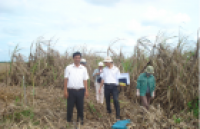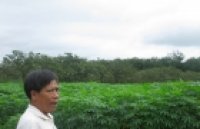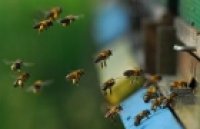| Lignin Reduction Observed in CRISPR-Edited Switchgrass |
|
Lignin, a major component of the plant cell wall, stands as a barrier to efficient biofuel production from switchgrass (Panicum virgatum). While the advent of genome editing technologies offers new opportunities for improving switchgrass, its allotetraploidy (2n = 4x =36) may make it difficult to engineer. |
|
Lignin, a major component of the plant cell wall, stands as a barrier to efficient biofuel production from switchgrass (Panicum virgatum). While the advent of genome editing technologies offers new opportunities for improving switchgrass, its allotetraploidy (2n = 4x =36) may make it difficult to engineer.
The team of Jong-Jin Park of Oak Ridge National Laboratory developed a CRISPR-Cas9 genome editing system in switchgrass to target 4-Coumarate:coenzyme A ligase (4CL), a key enzyme involved in the early steps of the synthesis of monolignol, a component of lignin. Among the three 4CL genes identified in switchgrass, the Pv4CL1 transcripts were the most abundant.
Pv4CL1 was then selected as the target for CRISPR-Cas9 editing and a guide RNA was constructed to target it. Among the 39 genome-edited plants were generated, four plants were confirmed to have tetra-allelic mutations simultaneously. The Pv4CL1 knock-out plants had reduced cell wall thickness, a significant reduction in total lignin content, an increase in glucose release as well as an increase in xylose release.
This study established a success of CRISPR-Cas9 system in switchgrass. The system will be useful for decreasing the lignin content of lignocellulosic feedstock.
For more on this study, read the article in BMC Plant Biology. |
|
|
|
[ Tin tức liên quan ]___________________________________________________
|


 Curently online :
Curently online :
 Total visitors :
Total visitors :


